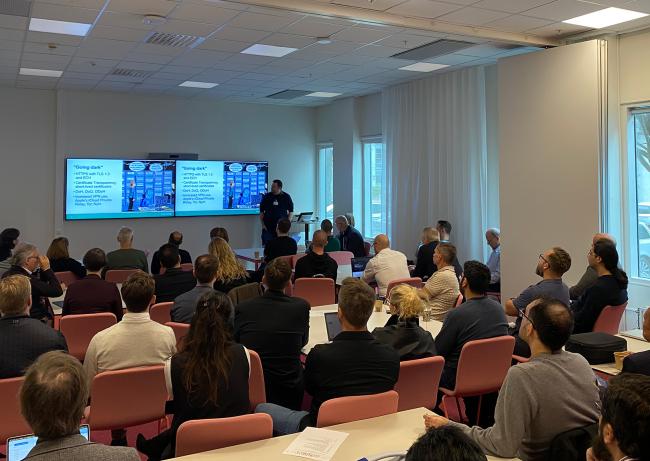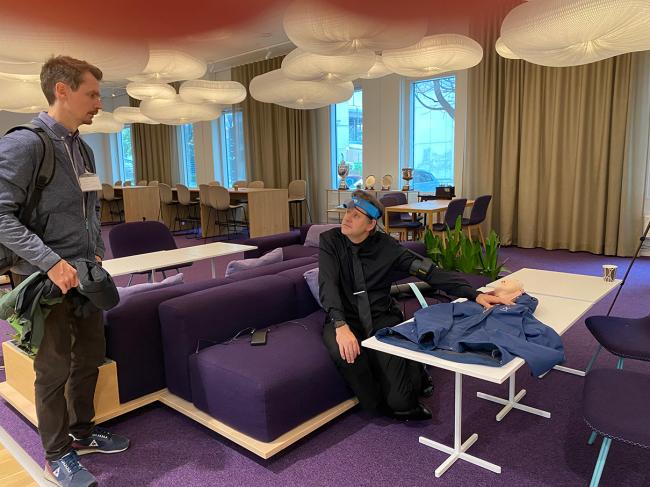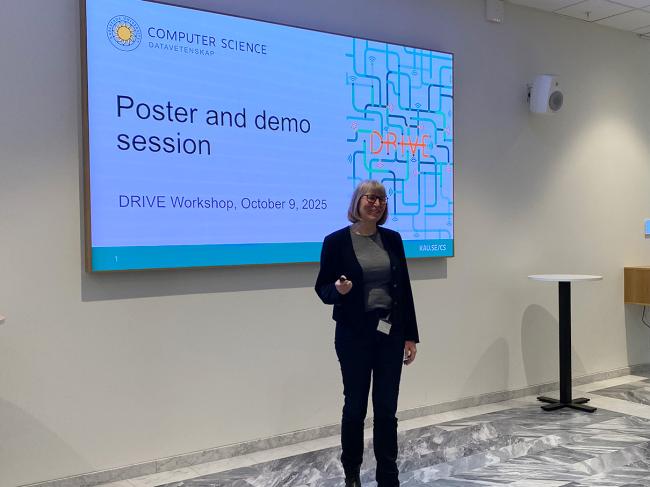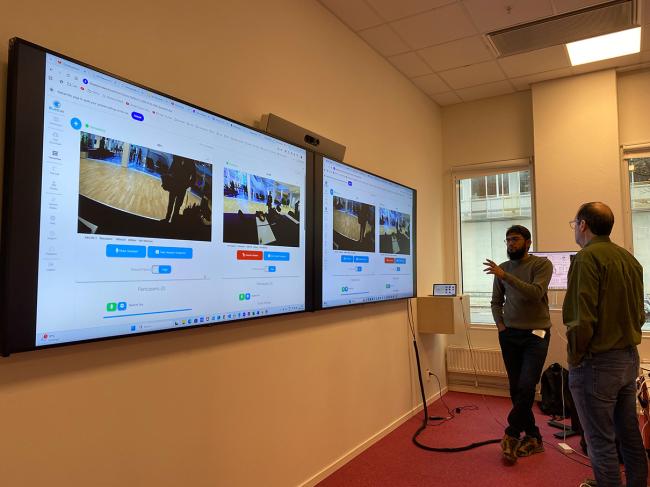DRIVE Annual Workshop 2025 attracted strong interest
2025-11-13This year’s DRIVE Annual Workshop brought together researchers, industry partners, and interested participants for two intensive days filled with presentations, discussions, and demonstrations.
New for this year was that the first part of the workshop was open to a broader audience, with the goal of spreading research results and creating new connections between academia and industry.
Open session focusing on current research
The open session began with welcome remarks from Karlstad University and Telia, followed by an introduction to the DRIVE project. After that, several current research contributions in networking, security, and artificial intelligence were presented.
Among other things, researchers from Karlstad University highlighted why end-to-end encryption is not always sufficient to guarantee complete security. They also presented how artificial intelligence can be used to optimize the placement of services in Edge–Cloud environments, which can improve both efficiency and resource utilization. In addition, there was discussion about how network slicing can help improve application performance by tailoring network resources to specific needs. Finally, insights were shared on Starlink’s performance and what satellite-based connectivity could mean for the networks of the future. Telia also presented results from latency measurements in the 5G network NorthStar.
The open part of the workshop concluded with a poster and demo session where researchers and doctoral students presented ongoing work along with two practical applications. The first demo, from the 6G-PATH project, showed how medical training with patient simulators can be made more realistic and accessible. Through remote control of the simulator and transmission of video streams, training can take place in different environments and include participants from various geographic locations, enabling more flexible and inclusive education. The second demo, from the SIMONE project, demonstrated how immersive communication using VR and 360° video can transform remote teaching. By creating a more engaging and present learning environment, the technology can increase interactivity and improve learning outcomes in distance education.
The day ended with a summary by Anna Brunström, who emphasized the value of collaboration between research projects and industry partners, as well as the importance of continuing to share research results beyond the academic world. It was the first time that DRIVE chose to begin its annual workshop with a public session — something that was appreciated by both researchers and visitors.
“We had two incredibly rewarding days filled with inspiration and great discussions. The workshop is always a valuable opportunity to gather the entire project group, exchange experiences, and look ahead. Over the past year, we have achieved several exciting results, and it was truly great to share them with each other,” said Anna Brunström, Professor of Computer Science and Project Leader for DRIVE.
• Read more about the DRIVE project here.











